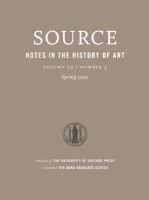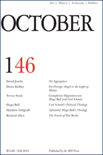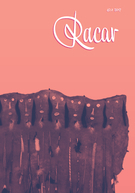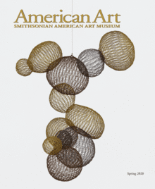
ART IN AMERICA
Scope & Guideline
Exploring the Pulse of Contemporary Art
Introduction
Aims and Scopes
- Contemporary Art Criticism:
The journal publishes in-depth critiques and analyses of contemporary artworks, offering insights into the motivations and techniques of artists working today. - Cultural Studies in Art:
ART IN AMERICA examines the intersection of art and culture, exploring how social, political, and historical contexts influence artistic practices and interpretations. - Artist Profiles and Interviews:
The journal features profiles and interviews with prominent and emerging artists, providing a platform for their voices and perspectives on their work and the art world. - Art History and Theory:
It engages with art historical narratives and theoretical frameworks, encouraging a deeper understanding of art movements and their implications for contemporary practice. - Diversity and Inclusion in Art:
The journal prioritizes discussions around diversity, representation, and inclusivity in the art world, highlighting underrepresented voices and perspectives.
Trending and Emerging
- Intersectionality in Art:
There is a growing emphasis on intersectionality, particularly how identity factors such as race, gender, and sexuality inform artistic practices and narratives, fostering a more nuanced understanding of contemporary art. - Environmental Art and Activism:
The journal increasingly highlights artworks that engage with environmental issues, reflecting a broader societal concern for climate change and sustainability within artistic practices. - Global Artistic Practices:
Emerging themes include a focus on global artistic practices, particularly from non-Western contexts, which enrich the discourse around contemporary art and challenge traditional narratives. - Community Engagement and Social Practice:
Artworks that emphasize community engagement and social practice are gaining traction, with artists increasingly using their work as a means of activism and social commentary. - Digital and New Media Art:
There is a resurgence of interest in digital and new media art, exploring how technology shapes artistic expression, audience engagement, and the dissemination of art in contemporary society.
Declining or Waning
- Traditional Art Forms:
There is a noticeable decline in the coverage of traditional art forms, such as classical painting and sculpture, as the journal increasingly emphasizes contemporary practices and interdisciplinary approaches. - Art Market Economics:
Discussions centered around the commercial aspects of the art market, including auction results and market trends, have diminished, signaling a shift towards a more critical and conceptual exploration of art. - Eurocentric Perspectives:
The journal has gradually moved away from Eurocentric narratives, focusing less on Western art history and more on global perspectives, which may indicate waning interest in traditional Western art frameworks. - Biographical Accounts of Artists:
While artist profiles remain popular, purely biographical accounts without thematic or critical analysis have decreased, reflecting a preference for deeper engagement with artists' ideas and practices. - Art and Technology:
The exploration of technology's role in art, including digital art and new media, has become less frequent, possibly overshadowed by other pressing themes in contemporary art.
Similar Journals

SOURCE-NOTES IN THE HISTORY OF ART
Advancing Scholarship in Visual and Performing ArtsSOURCE-NOTES IN THE HISTORY OF ART is a vital publication in the field of visual arts and performing arts, managed by the prestigious University of Chicago Press. With its ISSN 0737-4453 and E-ISSN 2328-207X, the journal serves as a scholarly platform for researchers, professionals, and students who are passionate about exploring the intricacies of art history. Although it currently holds a Q4 ranking in 2023, it provides a unique contribution by documenting and analyzing various dimensions of artistic endeavors, from historical references to contemporary practices. Despite being a newer entrant in the academic landscape, its focus on detailed source notes allows for deeper understanding and connections within art scholarship. Situated in the heart of Chicago, a city rich in artistic heritage, this journal is committed to promoting critical discourse and fostering awareness of the evolving narratives in art history. As the journal continues to cultivate rigorous academic dialogue, it stands as an essential resource for those dedicated to advancing and enriching the study of the arts.

OCTOBER
Innovating Perspectives in Cultural and Artistic ScholarshipOCTOBER is a seminal journal published by MIT PRESS that spans a diverse array of interdisciplinary themes within the humanities, specifically focusing on literature and literary theory, music, and the visual arts and performing arts. Established in 2002, this journal has become a cornerstone for scholars and practitioners seeking critical discourse and innovative research across its converged fields, maintaining a respectable impact factor that attests to its influence in academic circles. While OCTOBER currently does not offer open access, it provides valuable insights and analysis that drive contemporary thought and discussion, positioned in the Q2 and Q3 quartiles of Scopus rankings. The journal’s commitment to high-quality scholarship makes it an essential resource for those looking to deepen their understanding of cultural and artistic practices, reflecting the evolving landscape of the arts and humanities from a rigorously theoretical perspective.

Experiment-A Journal of Russian Culture
Discovering the Intersections of Literature, Art, and HistoryExperiment-A Journal of Russian Culture is a distinctive publication dedicated to exploring the multifaceted dimensions of Russian culture, encompassing literature, art, and social history. Published by BRILL, a respected name in academic publishing, this journal provides a platform for original research and insightful discourse, fostering a deeper understanding of Russia's rich cultural heritage. With an ISSN of 1084-4945 and an E-ISSN of 2211-730X, the journal is organized in a quarterly format, although it has seen varied publication years from 1996 through 2023. While it currently holds a Q4 ranking in both Cultural Studies and Visual Arts and Performing Arts, its commitment to interdisciplinary inquiry makes it a vital resource for researchers, professionals, and students interested in contemporary and historical Russian cultural phenomena. Despite its modest impact factors, the journal remains an essential platform for the dissemination of critical perspectives and theoretical frameworks, contributing to the ongoing dialogue about Russian identity and its artistic representations. The journal is available in print and may have limited digital access options, making it all the more precious for collectors and libraries committed to cultural studies.

Baltic Journal of Art History
Illuminating the Intersection of Art and HistoryBaltic Journal of Art History is a prominent academic journal published by UNIV TARTU PRESS, focusing on the rich tapestry of art historical research within the Baltic region and beyond. With its ISSN 1736-8812 and E-ISSN 2346-5581, the journal serves as a vital platform for scholars, artists, and historians to disseminate innovative findings and critical analyses in the fields of History and Visual Arts and Performing Arts. Established in 2017, it has gained recognition in academic circles, achieving a Q3 ranking in History and a Q2 ranking in Visual Arts and Performing Arts as of 2023. Despite not being open access, the journal continues to attract a diverse readership eager to engage with its rigorous, peer-reviewed content. Situated in Estonia, the journal not only enriches the regional scholarly discourse but also contributes significantly to global conversations on art history. Positioned at a pivotal intersection of various disciplines, the Baltic Journal of Art History invites researchers and practitioners alike to explore the aesthetic and cultural narratives that shape our understanding of art.

Sanat Tarihi Dergisi-Journal of Art History
Connecting Scholars through Artistic NarrativesSanat Tarihi Dergisi-Journal of Art History is a distinguished academic journal dedicated to the exploration and analysis of art history, published by the reputable E.U. Printing and Publishing House in Turkiye. With an ISSN of 1300-5707 and an E-ISSN of 2636-8064, this openly accessible journal has been providing a platform for scholarly discourse since its transition to Open Access in 2016. Catering to a diverse audience of researchers, professionals, and students, the journal aims to disseminate original research articles, critical reviews, and theoretical discussions that contribute to the understanding of artistic movements and their cultural implications throughout history. By fostering interdisciplinary dialogue, Sanat Tarihi Dergisi plays a pivotal role in advancing the field of art history and encouraging the exchange of innovative ideas among scholars globally. Its dedication to enhancing accessibility to high-quality research makes it an invaluable resource for anyone engaged in the study of visual culture.

South African Journal of Art History
Fostering a Deeper Understanding of South Africa's Artistic HeritageSouth African Journal of Art History is a premier academic publication dedicated to the exploration and critical analysis of art history within the South African context. Published by the Art Historical Work Group South Africa (AHWG), this journal serves as a vital platform for researchers, professionals, and students alike to disseminate innovative research and engage with diverse perspectives on visual culture. With an ISSN of 0258-3542, the journal aims to elevate the study of art history, contributing significantly to the scholarly community's understanding of both local and international art narratives. Although currently not an open access journal, it is committed to high academic standards and in-depth scholarship, ensuring that each article published meets rigorous criteria. As South Africa continues to position itself at the forefront of global art discourse, the South African Journal of Art History stands out as a critical resource for anyone interested in the intersections of art, culture, and history within this dynamic region.

RACAR-REVUE D ART CANADIENNE-CANADIAN ART REVIEW
Exploring the Depths of Canadian Art HistoryRACAR - Revue d'Art Canadienne (Canadian Art Review), published by the University Art Association of Canada, stands as a pivotal academic journal in the field of Canadian art history and cultural studies. With its ISSN 0315-9906 and E-ISSN 1918-4778, RACAR serves as a vital platform for scholarly research and discourse, aiming to illuminate the rich tapestry of Canada's artistic heritage. Although not an open-access journal, it is committed to disseminating high-quality peer-reviewed articles that contribute to the ongoing dialogue about art in Canada. The journal's focus encompasses a diverse range of topics, from contemporary visual arts to historical investigations, appealing to researchers, professionals, and students alike. Based at the Department of History in Art at University of Victoria, RACAR fosters a critical understanding of Canadian art within broader national and global contexts, making it an essential resource for anyone engaged in this vibrant field of study.

American Art
Celebrating the Intersection of Art and Cultural DiscourseAmerican Art, published by University of Chicago Press, is a leading journal in the fields of cultural studies and visual arts, with a notable impact in both academic and professional circles. Since its inception in 1996, the journal has provided a robust platform for scholarly discourse, showcasing a diverse array of research that examines the evolution, context, and significance of American art and its cultural implications. With an impressive Q2 ranking in Visual Arts and Performing Arts and a Q3 ranking in Cultural Studies for 2023, American Art remains a vital resource for researchers, professionals, and students alike, facilitating a deeper understanding of the intricacies within American artistic practices. While currently not offering open access, the journal is accessible through various academic databases, ensuring reach to a wide audience dedicated to the intersection of art and culture. The journal's commitment to innovative scholarship makes it an indispensable resource for anyone seeking to explore the dynamic landscape of American art.

Perspective-Actualite en Histoire de L Art
Bridging Past and Present in Visual Arts ScholarshipPerspective-Actualite en Histoire de L Art is a scholarly journal published by ARMAND COLIN, dedicated to the exploration and analysis of art history through a contemporary lens. With its ISSN 1777-7852, the journal provides insights and research findings that contribute to the ongoing discourse in the fields of history and visual arts, though it currently does not offer an open access model. Based in France, the journal has been actively publishing since 2010 and extends its academic reach through its rigorous evaluation process, ensuring quality and scholarly merit in its contributions. Despite currently holding a Q4 quartile ranking in both History and Visual Arts and Performing Arts categories, the journal plays a vital role in fostering dialogue among researchers, professionals, and students interested in the historical context and evolution of visual arts. Moreover, with Scopus rankings indicating its position within the competitive landscape of arts and humanities, Perspective-Actualite en Histoire de L Art serves as an important platform for critical analysis and modern interpretations of art history.

Laboratorio de Arte
Uncovering New Perspectives in Cultural StudiesLaboratorio de Arte is an esteemed journal published by UNIV SEVILLA, EDITORIAL, specializing in the interdisciplinary fields of Arts and Humanities, Conservation, Museology, and Visual Arts. With an impactful presence in research since its inception, the journal has been open access since 2006, promoting the free dissemination of knowledge and fostering academic dialogue among scholars, professionals, and students. The journal adheres to rigorous academic standards, reflected in its categorization within the Q2 and Q3 quartiles across various disciplines, and its commendable rankings in Scopus make it an essential resource for those engaged in the arts. The h-index for this journal showcases its contribution to the field, further solidifying its importance in contemporary research. As it continues to evolve through 2023 and beyond, Laboratorio de Arte serves as a vital platform for innovative thoughts and practices within the vibrant landscape of artistic and cultural studies.